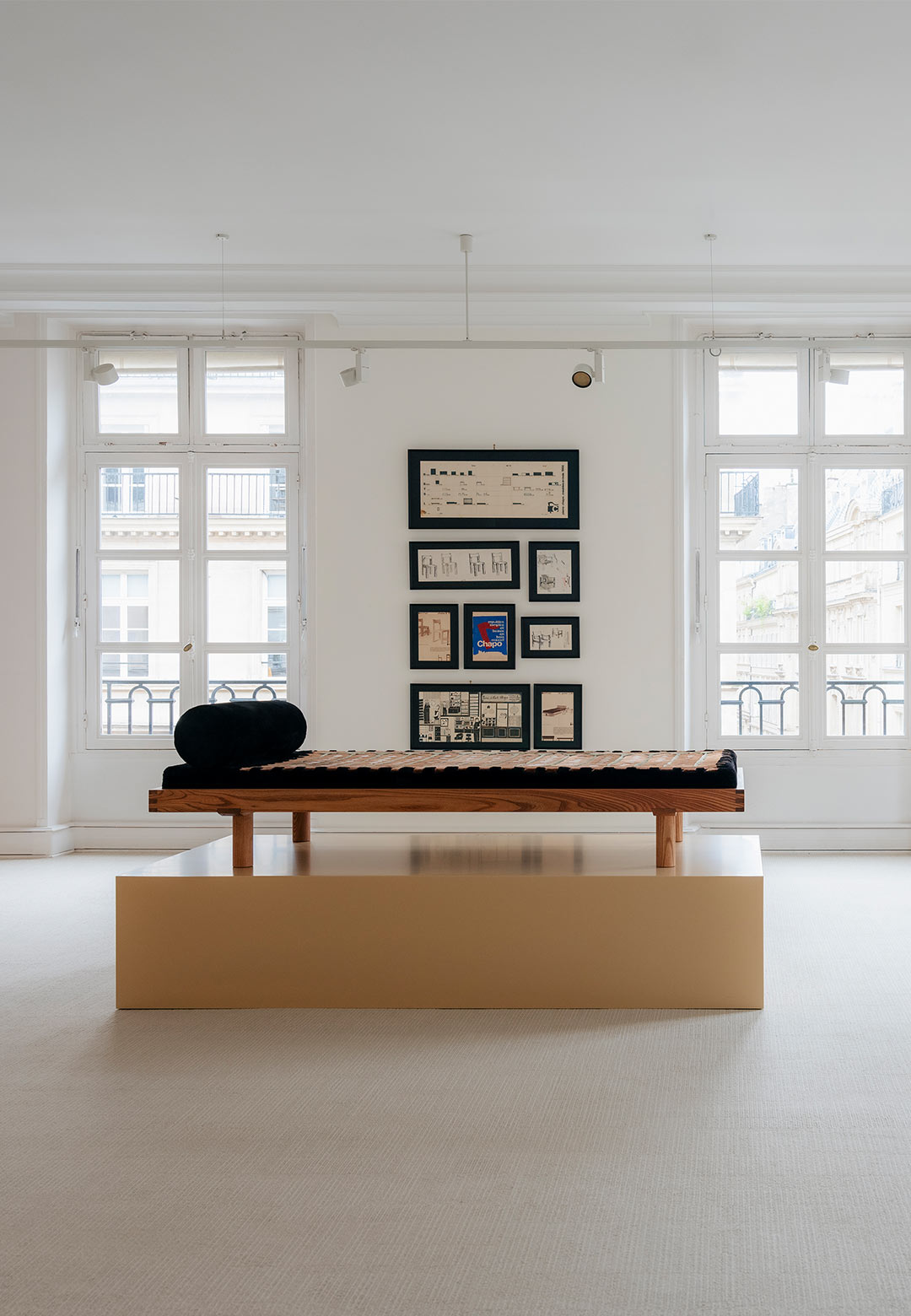Furniture outfits in soft textures meet woodcraft in an exclusive collaboration between Yves Salomon and Pierre Chapo. The project sees Salomon, known for his work in fur and fashion, extend his mastery of textiles into the world of furniture design. The result is a limited edition collection that merges the furniture designer's celebrated wooden pieces with Salomon's signature use of upcycled shearling, combining both brands' dedication to quality craftsmanship.
For decades, the company Yves Salomon has been a trusted name in Parisian luxury fashion, renowned for its work with high end brands. The Maison's success lies not only in its timeless designs but also in its innovative use of materials, especially through techniques such as intarsia. This method repurposes discarded fur scraps which are reworked into intricate, handcrafted patterns, reflecting Salomon's commitment to sustainable fashion. Recently, the brand expanded its offerings through two ready-to-wear lines and specialised crafting techniques.
This move into the realm of furniture design stems from a shared philosophy with Pierre Chapo, a prominent French designer known for his minimalist and functional product designs crafted from natural materials such as elm, oak and ash. Chapo's legacy in 20th century interior design is marked by iconic pieces such as the S15 armchair and the L01 bed. His work is prized for its simplicity, durability and attention to detail, qualities that complement Salomon's approach to textiles.
A collaboration between these two creative forces seems like a natural evolution. In 2023, Yves Salomon reached out to Chapo's estate, which still produces limited edition reproductions of his iconic furniture pieces. This partnership led to the reimagining of five of the interior designer's classic pieces. "Both Pierre Chapo and I share an obsession for the perfectly finished object, the balanced assemblage," explains Yves Salomon. His words encapsulate the spirit of this collaboration, which is all about achieving a harmonious blend between two distinct but complementary crafts.
The S10 Sahara armchair, a centrepiece of the collection, exemplifies this union. Originally designed in wood and leather, it now features Salomon's three-layer construction technique, incorporating supple natural fibres alongside cow leather and lamb leather. The chair design, one of the earliest collapsible pieces of furniture, has a modernist aesthetic and its transformation gives it a luxurious yet grounded feel.
Another standout is the L01 bed, first designed in 1959 for Samuel Beckett, the renowned Irish playwright and Nobel Prize winner known for works such as Waiting for Godot (1952). Known for its pure lines and horizontal form, this piece takes on new life in this collection as a day seat. The textured surface brings a tactile warmth that contrasts with the bed's sleek, floating design, creating a visual and sensory experience.
Unveiled in 1966, the S11 chair is an example of the product designer's intricate craftsmanship, with its elements assembled without glue or studs, much like a 3D puzzle. Measuring 78 cm tall with a 43 cm square seat, this sculptural chair has been reimagined by Salomon's team with intricate patterns, replacing the original linen or leather. This addition gives the chair a welcoming comfort, yet the meticulous construction remains central to the upcycled design.
Similarly, the S31 ottoman, originally designed in 1974, reflects the French artisan's love for clean lines, with a diagonal leg structure that suggests movement. Offered in three different heights, the round seat features a plush circular disk, resembling a porthole. The ottoman's stable design, despite its narrow base, highlights the balance between visual lightness and structural integrity.
The D19 balance arm lamp design features an elongated, geometric silhouette. This 150 cm long piece includes an artfully crafted lampshade made by the fashion atelier, creating a warm light that reflects beautifully off the lamp's elm base. The use of sustainable materials with tactile depth makes it both functional and visually striking, enhancing any space with its sculptural presence.
Each piece in the collection was crafted in Chapo's Vaucluse workshops, where traditional woodwork methods were used to maintain the original design. Once the wooden frames were complete, they were brought to the atelier in Paris for transformation. There, the team hand-selected reclaimed textiles, chosen for their unique textures and colours, and stitched them together. "Since shearling is not solid enough to be used for seating areas, we applied a three-layer technique. First, we created the patterns using shearling, then assembled them with cow leather for added durability. Finally, we recreated the same patterns with lamb leather to ensure consistency in both pattern and colour," Salomon explains to STIR, detailing the attention given to aesthetics and functionality in each piece.
The collection debuted at the 2024 Salone del Mobile.Milano in Milan, showcased at the Dimorecentrale Gallery, drawing attention for its blend of craftsmanship and modern luxury. Featured during the recently concluded Paris Design Week and soon to be presented at the Magen H Gallery in New York, the collection reflects a growing appreciation for responsible production in the world of high-end design.
This collaboration demonstrates what luxury furniture can achieve with an underlying dedication to mindful material use. Yves Salomon and Pierre Chapo's estate not only revisits the past through their respective crafts but also looks toward the future, with a collection that embraces sustainability and responsible production. In this, they create more than just wooden furniture—they support a vision of design that balances artistry, ethical responsibility and enduring beauty, inspiring a shift toward thoughtful luxury that prioritises craftsmanship and environmental awareness.






 Sign in with email
Sign in with email










What do you think?